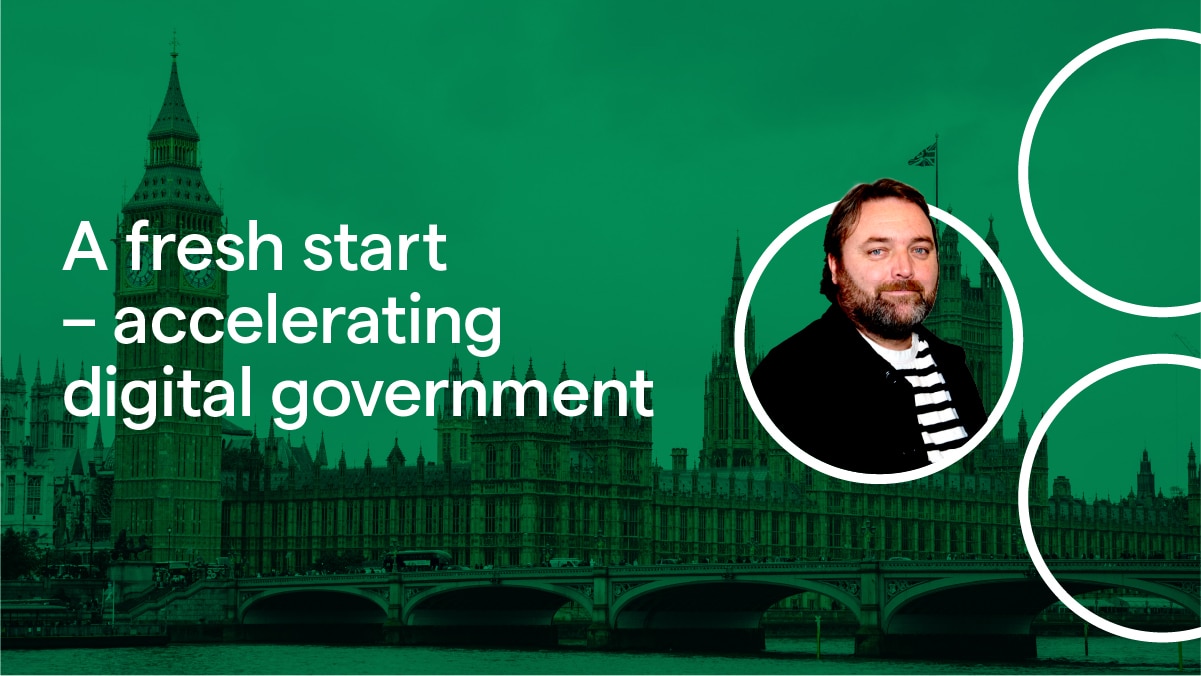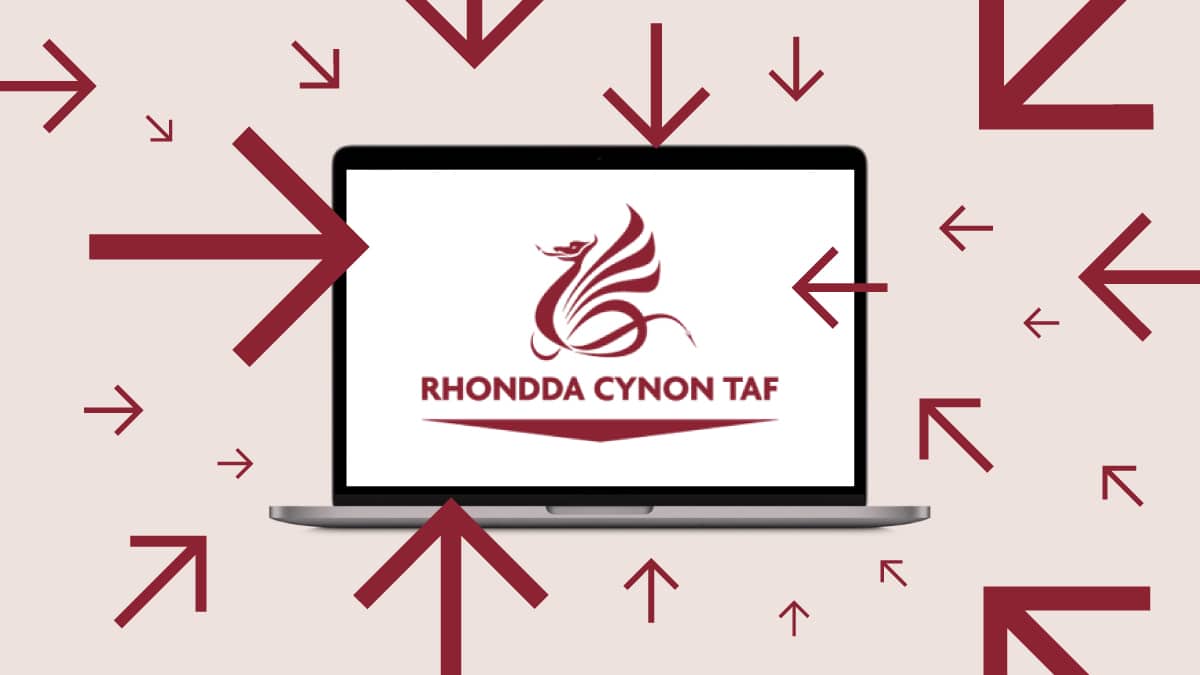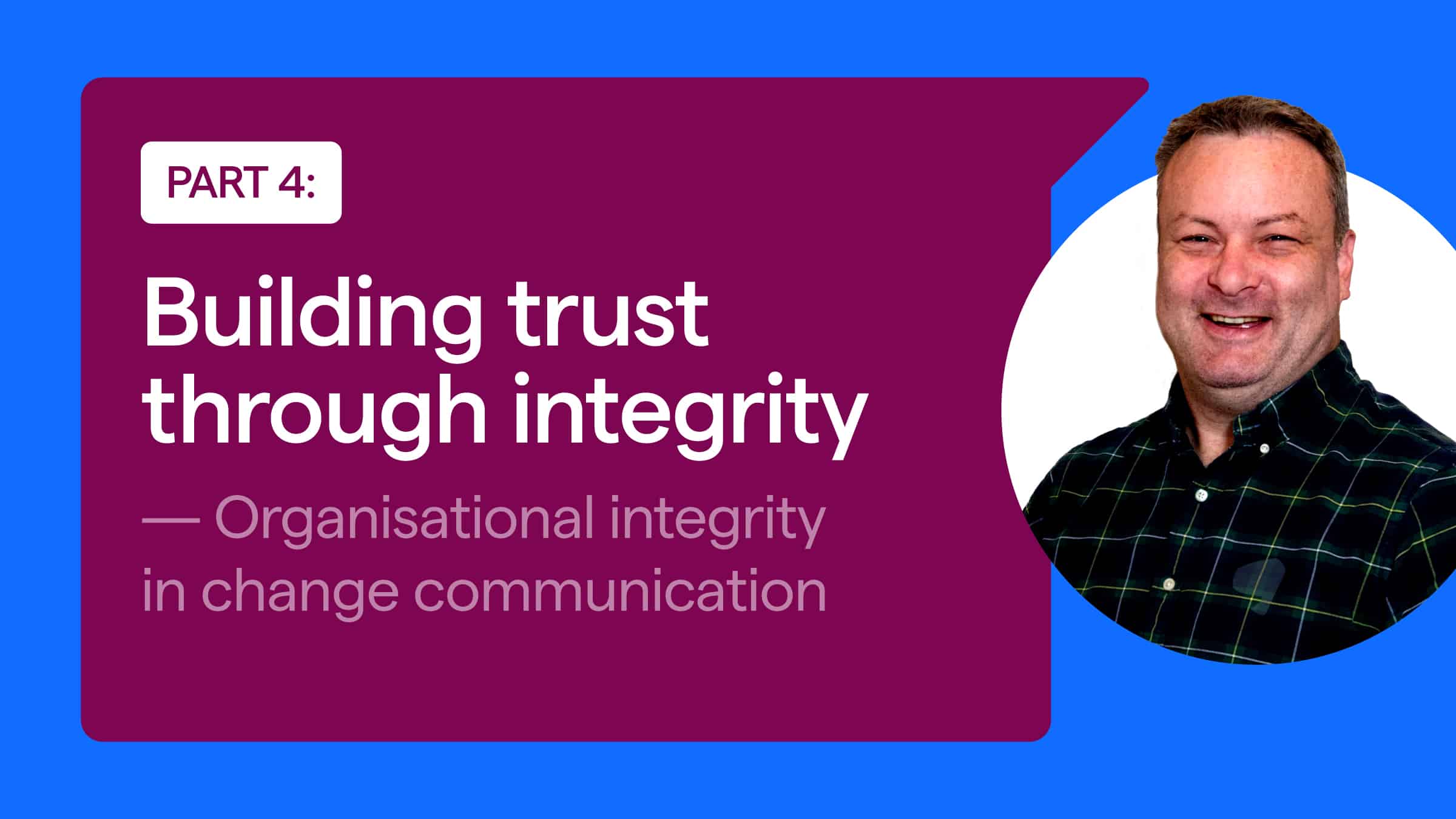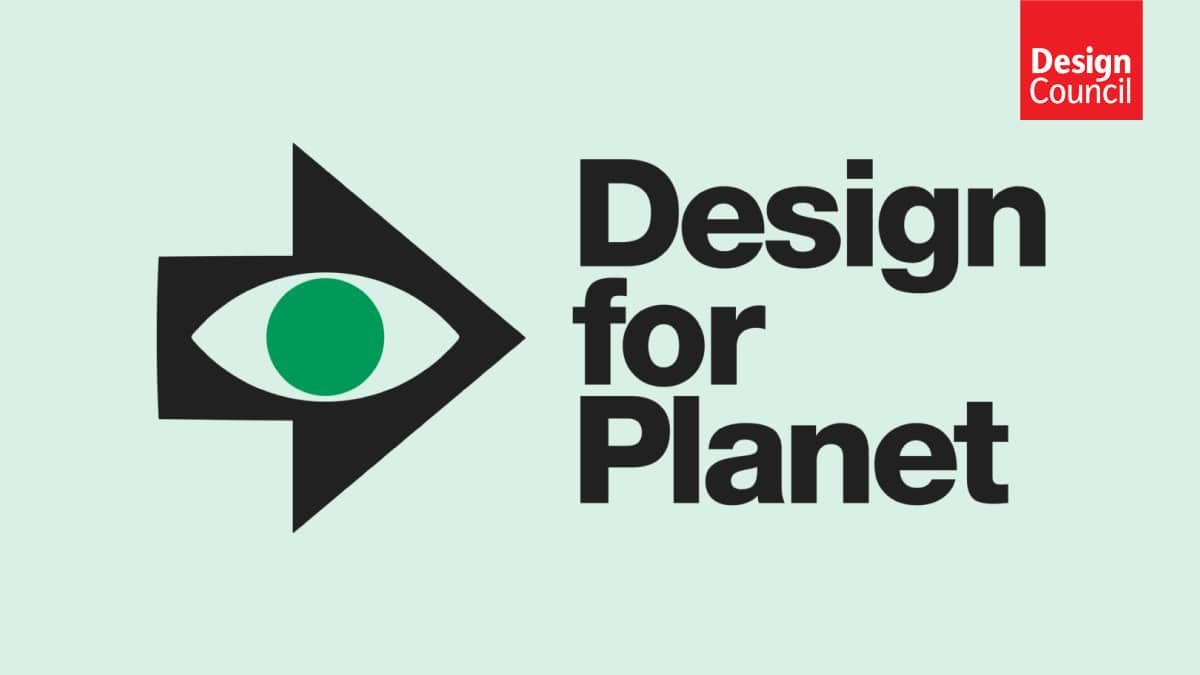Life Before Discovery
7 min read Written by: Cory Hughes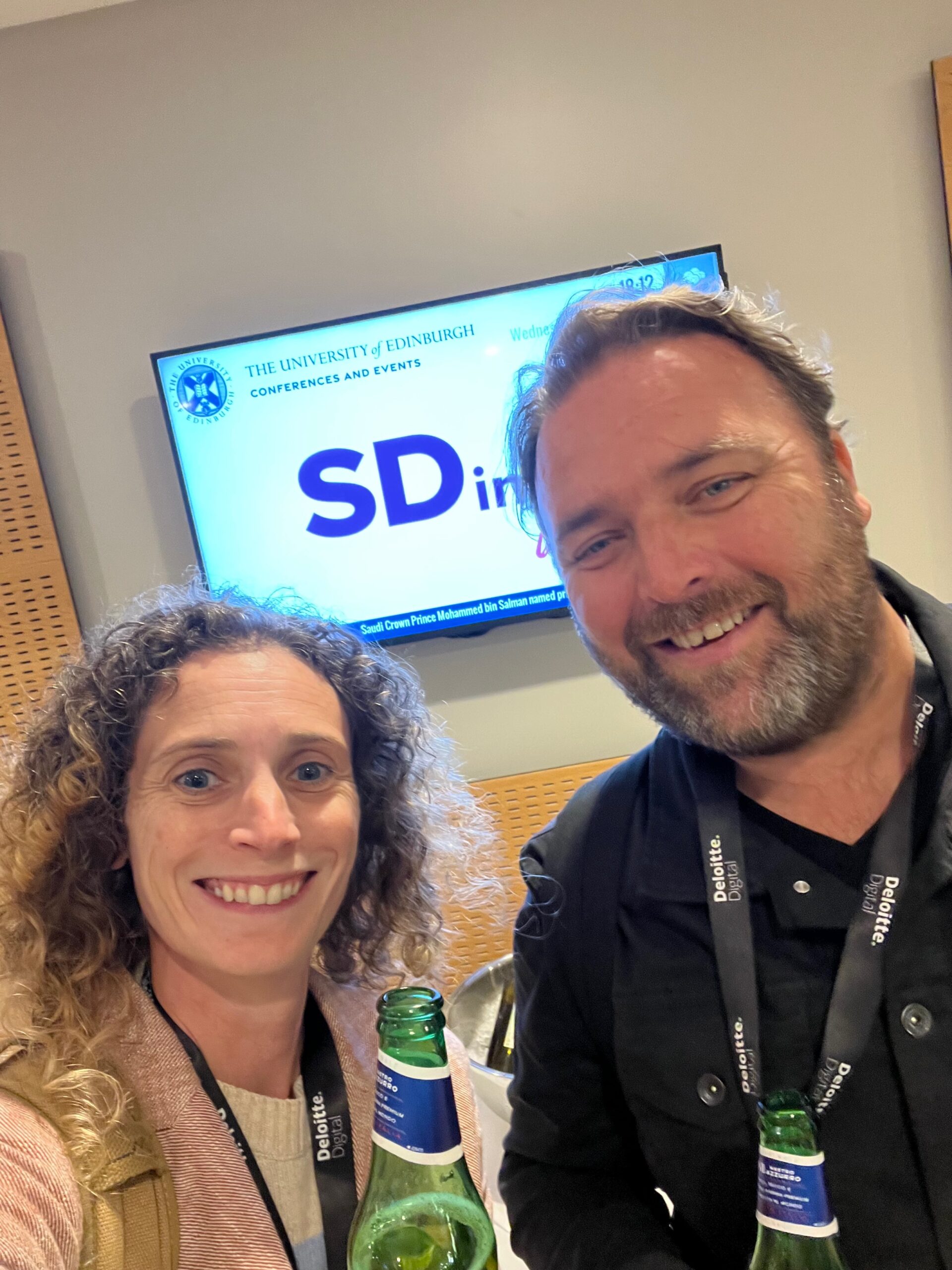
Last week, Tim and I headed up to Edinburgh for Service Design in Government. Now in its 9th year the event was created for anyone involved in designing and commissioning public services.
With participants from across central and local government services it’s a mix of keynotes, live sessions, interactive group sessions, speaker Q&As and a chance to get together with like-minded service design people.
Setting up a discovery for success
The title for our session was ‘Life Before Discovery’. We wanted to explore some of the challenges around running a successful discovery, particularly for organisations new to this way of working. Although SDinGov is a design-focused event, real change happens when you collaborate with experts from outside of your field. This is a way of working we value highly at Perago and we consciously chose a multi-disciplinary pairing of speakers for our talk. Tim’s background in government programme management and delivery meant that we could bring our learning from both sides – designing and delivering service transformation that works for users and the people who are tasked with funding and owning services internally.
We run a lot of discoveries. It’s a method that helps designers understand the problem to be solved, often reframing this problem from the perspective of the organisation to the perspective of the user of a service. In common with a lot of the challenges around public service delivery, the problems are getting bigger and the budgets are getting tighter. We owe it to our service users to have better designed services that meet their needs. Discovery also needs to deliver for stakeholders, as our ‘end-users’ with the power to decide what happens next. Yet still a lot of discovery projects are failing and we wanted to explore why.
Decades ago, frameworks like the Design Council’s Double Diamond gave the emerging discipline of user-centred design a universal starting point. It helped to make our work standardised, scalable and repeatable which is useful in large organisations like government. These frameworks also helped to communicate a ‘fuzzy’ way of working into something visual and tangible for our colleagues. As a design community, we still rely heavily on these frameworks as a jumping-off point for service design work, adding greater levels of complexity (and arguably, confusion) as we go.
In our quest to ‘process-ify’ design, have we unconsciously evolved frameworks that hinder our ability to influence change in the world we now find ourselves in? Endless discovery is bad news for service transformation AND the wellbeing of people who do the work. So, does service design really need discovery? Is there a better place to start?
Seeing the bigger picture
We need to understand unmet needs, but we must also be able to see and influence the bigger picture: services, outcomes, infrastructure, organisation and culture. We call this the ‘dark matter of service transformation’. We need to make the dark matter visible and know where we are in the wider system of change and influence. At Perago we use this digital transformation funnel to shape our approach to service transformation. It needs to start at an organisational level, a kind of landscape review to understand the context in which our services exist.
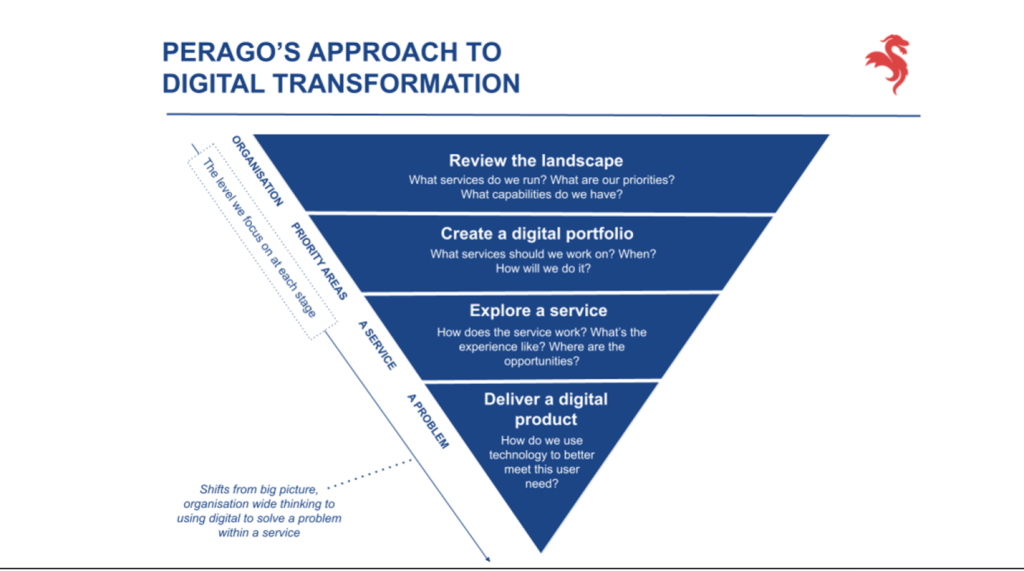
What can we do differently?
Ask the right questions: using our transformation funnel, we all have a role to play in asking the right questions. We can help stakeholders find an opportunity worth taking into discovery, set things up to succeed and create the foundations to design good services.
Words matter: the way we label our work has a big impact. Let’s design our communication effectively. We need to think about exploration rather than discovery. This change of word makes the process more equitable and positions service designers as collaborators and stewards, driving action
People matter: are the team, users, and stakeholders ready to start exploring the problem? We need to be confident to ask for more to make sustainable service transformation happen. This means more internal capability, more understand the long term and more clarity in service ownership and measure of success.
Stepping up to the public service delivery challenges
It was great to talk to people from across the service design community both before and after our session. One of the common messages was that understanding an organisation’s landscape and the role of service deign within it is going to be key to stepping up to the public service delivery challenges we’re facing. Putting service design at the centre and the beginning of organisational transformation is the first step to achieving that shift.
Get involved
To find out more about service design and the work we do at Perago you can follow us on LinkedIn and look out for how you can get involved.
We’d also love to speak at more events and connect with others working in this space. We’re conscious that there is still work to be done to hold events that remain inclusive to everyone through a hybrid approach – like our Digital Leaders event earlier this year. We’d love to explore opportunities to design more events like this and to speak at events that value a hybrid-first approach – if you’d like to chat please get in touch.
